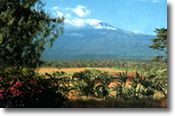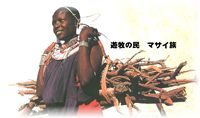 |
||||
|
||||
Tanzania, with a size 2.5 times as Japan, is located in the Eastern Africa facing the Indian Ocean, right south to Kenya. When European colonialism overwhelmed African continent in 19th century, it initially belonged to Germany. Then when Germany was defeated in the World WarT, England took over. (Note: Independence in 1961) Around about 1864 a conference for settlement of colonial borders was held among the European powers and African Kings. The Kaiser of Germany cordially asks the Queen Victoria of Great Britain. "Kenya has a mountain with snow on top, so does Uganda, so I would really like Tanganyika as well to have a mountain with snow in Mt. Kilimanjaro." (Note: Tanganyika and Zanzibar were to form the United Republic of Tanzania in 1964) It resulted in the borderline between Tanzania and Kenya turning north around Mt. Kilimajaro, the highest mountain in the African continent, now part of Tanzania. Tanzania has the lowest part of Africa as well. Lake Tanganyika has a depth of 1450 meters, second deepest in the world after Lake Baikal in Siberia. Tanzania thus has both the highest and lowest points in the African continent. |
||||
 |
||||
Lake Tanganyika is located in the western-most part of the famous African great rift system. The rift is formed by convection of mantle in the earth. As the African rift is right at the rising point of the mantle, the continent is still being pulled apart. And it is predicted that Eastern Africa will be separated from the African continent to become a land in the middle of Indian Ocean in 130 million years or so. Water of Lake Tanganyika flows into Atlantic Ocean through Congo River. The lake water has its uniqueness in strong alkalinity (ph9.7) and habitation of fish in excess of 340 species. While it stretches out approx. 600km long from north to south, the water is not influenced at all by the atmospheric temperature as the lake is located in the tropical zone all along, so that the water temperature at the depth of 3-7m is maintained stable. This inhibits natural convection of the water in the lake and accordingly the water below 250m deep lacks oxygen making no biological creatures exist in it. The reason for high alkalinity of the lake water lies in the rift itself. Some geologists in 1956 witnessed a volcanic eruption of Mt. Oldoinyo Lengai, north of Ngorongoro Reserve, and successfully recorded the scene by cameras. The color of magma erupted then was not red, but black. Unfortunately however, the film at the time was monochrome and did not serve as scientific evidence. Color film was available in time for the next eruption in 1964 and it was proven that magma in the African rift was black. The black magma is called carbonatite. Water of Lake Tanganyika is not salty at all. It is alkaline not caused by salt but by entirely different matter. |
||||

